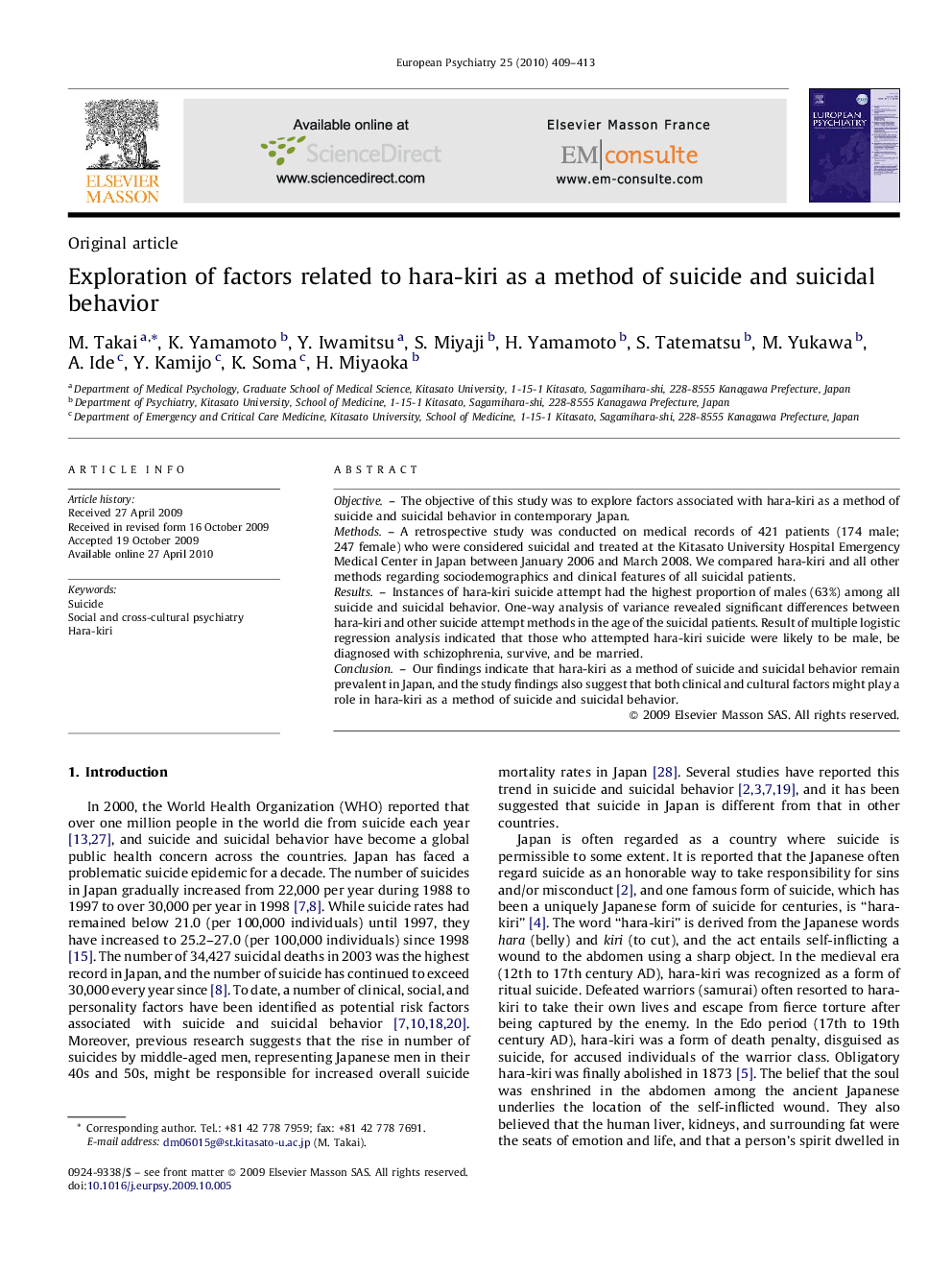| Article ID | Journal | Published Year | Pages | File Type |
|---|---|---|---|---|
| 4184914 | European Psychiatry | 2010 | 5 Pages |
ObjectiveThe objective of this study was to explore factors associated with hara-kiri as a method of suicide and suicidal behavior in contemporary Japan.MethodsA retrospective study was conducted on medical records of 421 patients (174 male; 247 female) who were considered suicidal and treated at the Kitasato University Hospital Emergency Medical Center in Japan between January 2006 and March 2008. We compared hara-kiri and all other methods regarding sociodemographics and clinical features of all suicidal patients.ResultsInstances of hara-kiri suicide attempt had the highest proportion of males (63%) among all suicide and suicidal behavior. One-way analysis of variance revealed significant differences between hara-kiri and other suicide attempt methods in the age of the suicidal patients. Result of multiple logistic regression analysis indicated that those who attempted hara-kiri suicide were likely to be male, be diagnosed with schizophrenia, survive, and be married.ConclusionOur findings indicate that hara-kiri as a method of suicide and suicidal behavior remain prevalent in Japan, and the study findings also suggest that both clinical and cultural factors might play a role in hara-kiri as a method of suicide and suicidal behavior.
